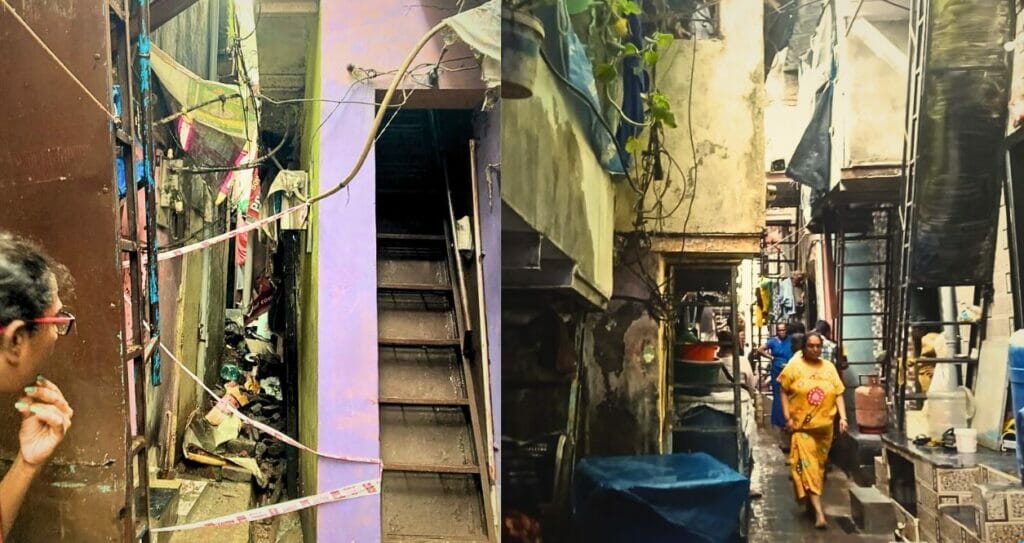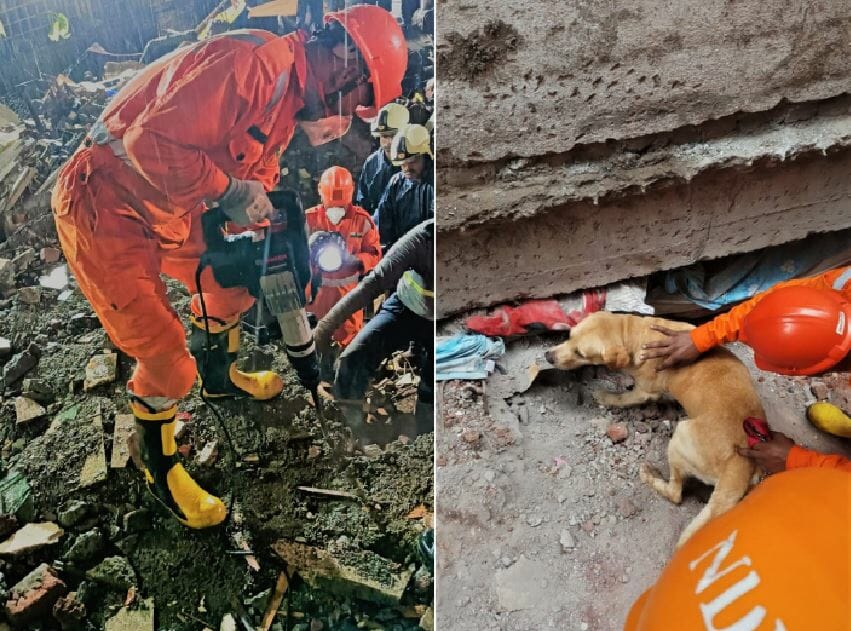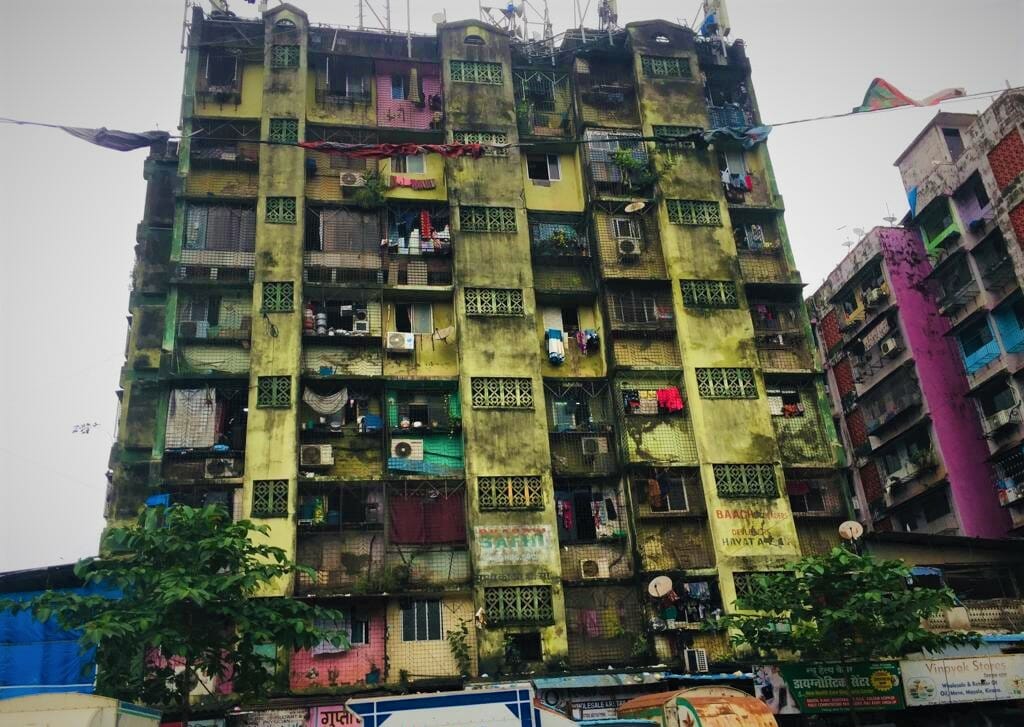On the morning of July 29, after continuous overnight rainfall, Prashant Pawar, and his neighbours heard a loud noise along with tremors, which felt like an earthquake. Everyone rushed outside to find the upper floor of a ground+1 storey house adjacent to their residence had collapsed, sending debris crashing down. The upper floor was occupied by a couple, while a family with two children lived on the lower floor.
The family from the lower floor managed to escape but Priya Raj, was at home and sustained a head injury and was bleeding profusely. Prashant jumped into the wreckage to help and carried her to safety. Soon after, the fire brigade and police arrived for the rescue operation.
“I couldn’t stand by and do nothing, I knew I had to act fast. All I could think of was to somehow ensure she doesn’t get crushed under the debris,” recounted Prashant. Due to his efforts, Priya received timely medical treatment and, although shaken, survived the terrifying incident.
During the monsoon season, the city witnesses several accidents and hazards, posing significant risks to life and property.
One of the most common accidents is the collapse of buildings and walls. Hundreds of old, poorly-maintained structures and makeshift settlements are too risky to be inhabited but people continue to live.

Building collapse accidents
Since June when monsoon set in, there have been 115 incidents of house or building collapses, leading to four tragic deaths and more than 15 injured, according to the latest data released by the Brihanmumbai Municipal Corporation (BMC) on August 2.
One of these incidents occurred on June 25, when a bungalow in Chittaranjan Nagar, near Rajawadi Municipal Hospital in Ghatkopar, East, collapsed, claiming the lives of Alka Palande, aged 94, and her son Naresh Palande, aged 56. An overnight rescue operation, supported by sniffer dogs, was conducted, and the rescue team managed to retrieve their bodies.
On the same day, another tragedy struck when a two-storeyed building came down in Vile Parle’s Gaothan area, killing two people and injuring two more. Prompt action led to the successful rescue of the victims, who were immediately rushed to Cooper Hospital.
In a separate incident the following day, four individuals sustained injuries, when the first floor of their room in Ramabai Ambedkar Nagar, Eastern Express Highway, Ghatkopar, East, also collapsed. The colony is characterised by numerous structures constructed without BMC permission for additional floors. The four injured individuals were admitted to Rajawadi Hospital.
The need for better regulations and safety measures in construction practices within the city is never felt more than now.
Read more : Monsoon at its peak, Mumbai deals with accidents, some fatal too.

Why do these structures collapse?
Buildings collapse during heavy rains due to various reasons. Firstly, poor construction quality, including the use of substandard materials and weak foundations, increases the risk due to rainfall-induced stress. Secondly, bad drainage systems lead to water accumulation around buildings, weakening the foundation and causing potential collapses.
According to Praveen Kumar, an architect from Mulund, heavy rains directly impact buildings, especially those in low-lying areas or near water bodies like most parts of Mumbai. “Structural damage from water infiltration over time due to rains, weakens building materials, leading to corrosion and instability of the structure, which finally leads to collapse,” he says.
Buildings with poorly designed roofs are prone to collapse during heavy rains, as roofs unable to withstand the weight of accumulated rainwater cave in, causing significant damage. The maintenance of the buildings, especially older buildings, should be done regularly, such as repairing cracks, addressing water leaks, or reinforcing weakened areas. If this is not done, the building becomes more vulnerable to collapse during heavy rains, he adds.

BMC’s role
Earlier in May the BMC released a list of 226 dilapidated buildings, which are in a “very dangerous” condition under section 354 of the Brihanmumbai Municipal Corporation Act, 1888. Of the 226 structures, the western suburbs account for the highest 126, followed by eastern suburbs with 65 and 35 in the island city, the release said.
According to the BMC’s policy, buildings that are more than 30 years old are eligible for audit. Based on a survey, the civic body annually classifies the buildings in various categories and decides whether they should be demolished completely or allowed to be repaired.
Reports say, the civic body sometimes takes stringent measures of disconnecting power and water supply, when the residents don’t vacate a building that is classified as “extremely dangerous.”. They also appeal to citizens to vacate these buildings and move to safer locations as a precautionary measure.
Residents living in such old buildings or informal settlements are particularly vulnerable. The combination of weakened foundations, water seepage, and the pressure from heavy rainfall increases the likelihood of fatal incidents, said an official from the Mumbai Fire Brigade (MFB) department.
Moreover, growing population density has led to the development of numerous unauthorised constructions, further complicating the safety situation. Many of these structures lack the necessary approvals and do not adhere to building codes. This makes them susceptible to collapse during heavy rainfall and poses severe risks to both occupants and passersby, added the official.
Uphill challenge of repairs and restoration
Poor construction practices and inadequate monitoring of building safety are main factors contributing to building collapses in Mumbai.
Efforts to address these issues include various safety measures, such as building inspections, strengthening existing structures, and evicting and rehabilitating occupants from dangerous buildings.
However, according to experts, the scale of the problem is immense, and it requires a comprehensive approach from the BMC authorities, urban planners, and communities to mitigate the risks and safeguard lives during the monsoon season.
| Dos and don’ts to prevent building collapse Hire qualified professionals for design and construction of buildings. Use quality materials that meet safety standards. Conduct regular inspections to identify structural weaknesses. Adhere to building codes to ensure safety. Proper building foundation suitable for the soil conditions. Proper drainage systems to prevent water accumulation. Consider surrounding factors such as nearby construction, excavation, or unstable slopes that could impact building stability. Do not compromise on construction quality. Do not ignore signs of damage like cracks, settling, or structural issues. Do not make unauthorised alterations or additions to buildings. Do not overload structures, it can strain the structure and lead to collapse. Do not demolish any part of a building without proper planning and structural assessment. |
| During building collapse contact BMC’s Disaster Management Department Emergency Helpline 1916 WhatsApp +91-8999228999 Website : https://dm.mcgm.gov.in/ |